PINOCEMBRIN
- CAS NO.:480-39-7
- Empirical Formula: C15H12O4
- Molecular Weight: 256.25
- MDL number: MFCD06858345
- SAFETY DATA SHEET (SDS)
- Update Date: 2024-12-18 14:07:02
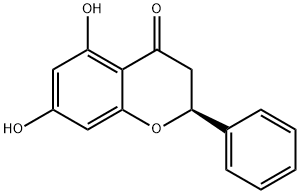
What is PINOCEMBRIN?
Description
Pinocembrin is a flavonoid that has been found in Eucalyptus, and has diverse biological activities. It induces apoptosis in, and inhibits the migration of, SKOV3 ovarian cancer cells when used at a concentration of 200 μM. Pinocembrin (5 mg/kg) reduces lesion volume, as well as brain microglial activation and production of IL-1β, IL-6, and TNF-α in a mouse model of collagenase-induced intracerebral hemorrhage (ICH). It prevents increases in plasma and kidney malondialdehyde (MDA) levels, glomeruli lobulation, mesangial expansion, and tubule vacuolization and occlusion, and it decreases hepatic cholesterol, triglyceride, and LDL levels in a rat model of diabetic nephropathy. Pinocembrin (20 and 50 mg/kg) reduces pulmonary edema, as well as neutrophil, lymphocyte, and macrophage infiltration in a mouse model of LPS-induced lung injury.
Chemical properties
Solid
The Uses of PINOCEMBRIN
Pinocembrin is a flavanoid with antioxidant activity found in damiana, honey, and propolis. Recent studies show that Pinocembrin maybe be a therapeutic option in reducing cerebral ischemia/reperfusion injury as a result of its anti-oxidative and anti-apoptotic effects. Pinocembrin displayed neuroprotective effects in glutamate injury model partly by inhibiting p53 expression causing a lower Bax-Bc l-2 ratio and by inhibiting the release of cytochrome c.
The Uses of PINOCEMBRIN
Pinocembrin is a flavanoid with antioxidant activity found in damiana, honey, and propolis. Recent studies show that Pinocembrin maybe be a therapeutic option in reducing cerebral ischemia/reperfusion injury as a result of its anti-oxidative and anti-apoptotic effects. Pinocembrin displayed neuroprotective effects in glutamate injury model partly by inhibiting p53 expression causing a lower Bax-Bcl-2 ratio and by inhibiting the release of cytochrome c.
Definition
ChEBI: Pinocembrin is a dihydroxyflavanone in which the two hydroxy groups are located at positions 5 and 7. A natural product found in Piper sarmentosum and Cryptocarya chartacea. It has a role as an antioxidant, an antineoplastic agent, a vasodilator agent, a neuroprotective agent and a metabolite. It is a dihydroxyflavanone and a (2S)-flavan-4-one.
Properties of PINOCEMBRIN
| Melting point: | 202 °C |
| Boiling point: | 511.1±50.0 °C(Predicted) |
| Density | 1.386±0.06 g/cm3(Predicted) |
| storage temp. | under inert gas (nitrogen or Argon) at 2-8°C |
| solubility | Soluble in ethanol and methan |
| form | powder |
| pka | 7.50±0.40(Predicted) |
| color | White |
| EPA Substance Registry System | 4H-1-Benzopyran-4-one, 2,3-dihydro-5,7-dihydroxy-2-phenyl-, (2S)- (480-39-7) |
Safety information for PINOCEMBRIN
| Signal word | Warning |
| Pictogram(s) |
 Exclamation Mark Irritant GHS07 |
| GHS Hazard Statements |
H302:Acute toxicity,oral H315:Skin corrosion/irritation H319:Serious eye damage/eye irritation H335:Specific target organ toxicity, single exposure;Respiratory tract irritation |
| Precautionary Statement Codes |
P261:Avoid breathing dust/fume/gas/mist/vapours/spray. P305+P351+P338:IF IN EYES: Rinse cautiously with water for several minutes. Remove contact lenses, if present and easy to do. Continuerinsing. |
Computed Descriptors for PINOCEMBRIN
New Products
4-Fluorophenylacetic acid 4-Methylphenylacetic acid N-Boc-D-alaninol N-BOC-D/L-ALANINOL Tert-butyl bis(2-chloroethyl)carbamate 3-Morpholino-1-(4-nitrophenyl)-5,6-dihydropyridin- 2(1H)-one Furan-2,5-Dicarboxylic Acid Tropic acid S-2-CHLORO PROPIONIC ACID ETHYL ISOCYANOACETATE 2-Bromo-1,3-Bis(Dimethylamino)Trimethinium Hexafluorophosphate (6-METHYL-[1,3]DITHIOLO[4,5-b]QUINOXALIN-2-ONE INDAZOLE-3-CARBOXYLIC ACID 4-IODO BENZOIC ACID (2-Hydroxyphenyl)acetonitrile 4-Bromopyrazole 5,6-Dimethoxyindanone 2-(Cyanocyclohexyl)acetic acid 4-methoxy-3,5-dinitropyridine 2-aminopropyl benzoate hydrochloride 1-(4-(aminomethyl)benzyl)urea hydrochloride diethyl 2-(2-((tertbutoxycarbonyl)amino) ethyl)malonate tert-butyl 4- (ureidomethyl)benzylcarbamate Ethyl-2-chloro((4-methoxyphenyl)hydrazono)acetateRelated products of tetrahydrofuran

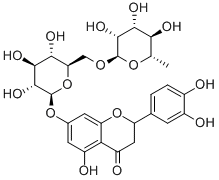
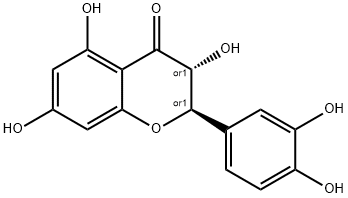
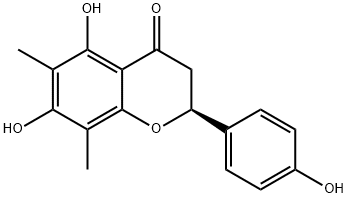
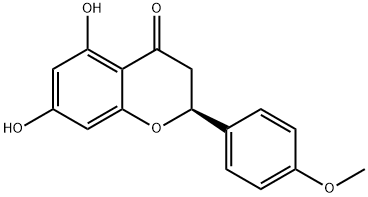


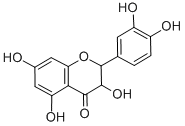
You may like
-
 Pinocembrin 95% CAS 480-39-7View Details
Pinocembrin 95% CAS 480-39-7View Details
480-39-7 -
 Pinocembrin CAS 480-39-7View Details
Pinocembrin CAS 480-39-7View Details
480-39-7 -
 1975-50-4 98%View Details
1975-50-4 98%View Details
1975-50-4 -
 2-HYDROXY BENZYL ALCOHOL 98%View Details
2-HYDROXY BENZYL ALCOHOL 98%View Details
90-01-7 -
 2-Chloro-1,3-Bis(Dimethylamino)Trimethinium Hexafluorophosphate 221615-75-4 98%View Details
2-Chloro-1,3-Bis(Dimethylamino)Trimethinium Hexafluorophosphate 221615-75-4 98%View Details
221615-75-4 -
 61397-56-6 CIS BROMO BENZOATE 98%View Details
61397-56-6 CIS BROMO BENZOATE 98%View Details
61397-56-6 -
 14714-50-2 (2-Hydroxyphenyl)acetonitrile 98+View Details
14714-50-2 (2-Hydroxyphenyl)acetonitrile 98+View Details
14714-50-2 -
 118753-70-1 98+View Details
118753-70-1 98+View Details
118753-70-1